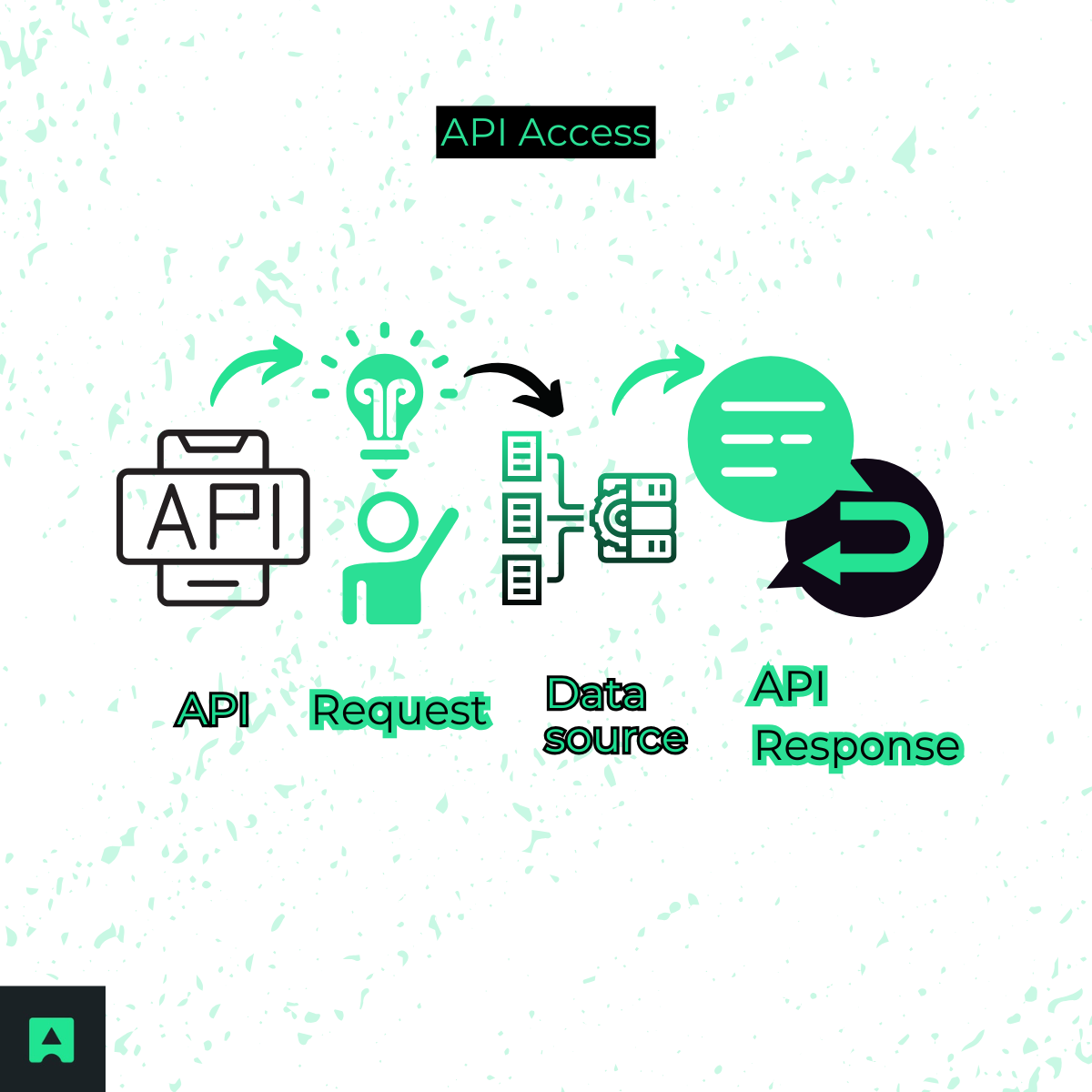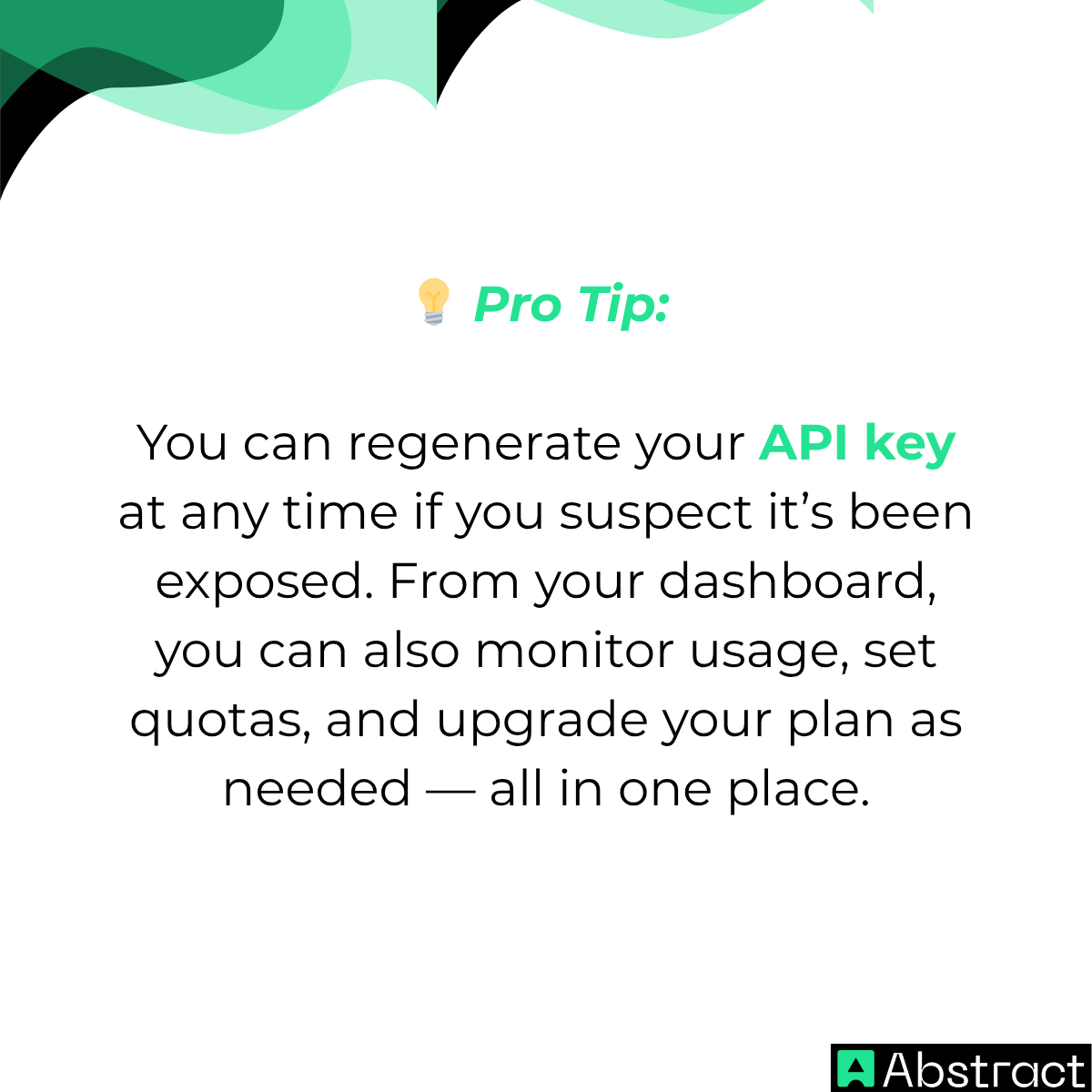What is API Access? A Beginner’s Guide to Secure and Simple Authentication
In the modern software landscape, APIs (Application Programming Interfaces) are the bridges that connect systems, applications, and services. From verifying emails to tracking IP addresses and integrating payment systems, APIs allow developers to build more powerful apps by leveraging third-party services.
But just like you wouldn’t leave your front door open, you shouldn’t leave your API endpoints unprotected. That’s where API access comes into play.
- API access refers to the methods used to control who can use an API and what operations they're permitted to perform. It’s the mechanism that ensures APIs are used safely, fairly, and as intended — acting as a digital gatekeeper 🛡️ for your app’s data and services.
Whether you're experimenting with APIs for the first time or integrating a production-level service, understanding how API access works is crucial for protecting your application and managing its performance.

Common Methods for Controlling API Access
There are several ways developers implement access control to manage how APIs are used. The right approach depends on factors like your app’s architecture, whether users are involved, and the sensitivity of the data being exchanged.
Here are the most widely used methods:
🔑 1. API Keys
API keys are unique identifiers — typically a long string of random characters — assigned to an individual user or application. They act like an ID badge, proving that the client calling the API has permission to do so.
Developers typically send this key as a query parameter, in the request header, or as part of the request body.
Example use case:
- Imagine you're building a contact form for a small business website, and you want to verify submitted email addresses using a third-party API. Since there’s no need to authenticate users or manage permissions, an API key is the perfect lightweight solution.
✅ Pros:
- Quick to implement
- Easy to understand for beginners
- Ideal for machine-to-machine communication
⚠️ Considerations:
- While they provide basic security, API keys alone are not encrypted or time-bound, so it's essential to keep them private and rotate them if compromised.
🛂 2. OAuth 2.0
OAuth 2.0 is a protocol that enables one application to gain limited access to another user's data on a third-party service — all without ever seeing the user's login credentials.
Rather than sharing passwords, users grant permission through a secure authorization flow. This is commonly used in “Log in with Facebook/Google” buttons.
Example use case:
- You’re building a fitness app that lets users connect their Spotify accounts to generate workout playlists. Instead of asking for Spotify usernames and passwords (a major security risk), you implement OAuth so users can grant permission for your app to access their music library.
✅ Pros:
- Enables secure, delegated access
- Protects user credentials
- Supports token expiration and revocation
⚠️ Considerations:
- More complex to implement than API keys
- Often requires managing refresh tokens, authorization servers, and scopes
📦 3. JWT (JSON Web Tokens)
A JWT is a compact, encrypted token that contains all the information needed to verify a user’s identity and permissions. These tokens are commonly used in web applications for managing sessions and user authentication.
A JWT typically includes:
- A header (token type and algorithm)
- A payload (user data and claims)
- A signature (for verifying the token hasn’t been tampered with)
Example use case:
- After a user logs into a news subscription website, your app generates a JWT that’s stored in the browser. For subsequent requests (like fetching saved articles), the JWT proves the user is authenticated — no need to log in again for each action.
✅ Pros:
- Stateless authentication — no need to store sessions on the server
- Works well with single-page apps (SPAs)
- Tokens can be verified offline
⚠️ Considerations:
- JWTs must be signed and/or encrypted to prevent misuse
- If not managed properly, long-lived tokens can introduce risks
Why Does Managing API Access Matter?
Whether you’re building a simple web app or running a large-scale platform, controlling API access is essential for protecting your resources, users, and business model. It’s not just about authentication — it’s about visibility, safety, and sustainability.

Let’s break down the core reasons why API access management matters:
🔒 1. Security: Prevent Unauthorized and Malicious Usage
At its core, API access control is a security measure — and a critical one. Every exposed API endpoint is a potential door into your system. Without proper access management, you risk:
- Unauthorized data access: Hackers or automated scripts could exploit your API to retrieve or modify sensitive information.
- Data leaks: APIs often interact with personal user data or business-critical operations. Without access controls, this data could be exposed unintentionally.
- Abuse or misuse: Spammers or bots could hit your endpoints thousands of times a minute, overwhelming your backend or inflating your service costs.
- Access control helps ensure that only verified users or apps can interact with your API, and that they’re doing so within defined rules and limits. Think of it as locking the front door and checking ID before letting anyone in.
📊 2. Monitoring & Insights: Know Who’s Doing What
Good access management doesn’t just keep the wrong people out — it also helps you understand how the right people are using your API.
By requiring each client to authenticate (using API keys, tokens, or other identifiers), you can track:
- Which apps or developers are generating the most traffic
- What endpoints are being called most frequently
- How usage changes over time or under different conditions
This insight is invaluable for:
- Performance tuning: Identify bottlenecks and scale intelligently
- Product development: Learn which features your users rely on most
- Troubleshooting: Quickly trace problems back to specific clients or usage patterns
🧠 Pro Tip: AbstractAPI's dashboard makes it easy to visualize and monitor this kind of activity in real time, all tied back to your individual API key.
💸 3. Monetization: Enforce Quotas, Pricing Tiers & Fair Use
If your API is part of your product — or if you're offering it as a paid service — access control becomes central to your business model.
Here's how it supports monetization:
- Rate Limiting: Prevents a single user or bot from consuming excessive resources, ensuring fair access for all users.
- Quota Enforcement: Lets you limit the number of requests per API key, tied to your pricing plans or SLAs.
- Usage-Based Billing: Track exact usage per client and generate invoices accordingly.
- Free Tier Control: You might offer a limited number of free requests before requiring payment. API access controls help you enforce that automatically.
📈 For API providers like AbstractAPI, managing access allows us to offer a free tier for developers, while also protecting backend resources and enabling seamless upgrades as users grow.
Simple & Secure: API Access with AbstractAPI
At AbstractAPI, we intentionally chose API keys as the access method across all our services — and for good reason.
We wanted a method that was:
- Easy to implement, even for junior developers
- Compatible with any language or tech stack
- Simple enough for quick testing, yet powerful enough to support production use
✅ Here's how easy it is to get started:
- Create your free AbstractAPI account at abstractapi.com
- Head to your personal dashboard, where you’ll be assigned a unique API key for each service you subscribe to.
- Use that key in your API requests like this:
Curl Example:
curl "https://emailvalidation.abstractapi.com/v1/?api_key=YOUR_API_KEY&email=example@domain.com"
JavaScript Example:
fetch("https://emailvalidation.abstractapi.com/v1/?api_key=YOUR_API_KEY&email=example@domain.com")
.then(response => response.json())
.then(data => console.log(data));

Wrapping Up: Choosing the Right Access Method
Controlling API access isn’t just a technical detail — it’s a cornerstone of secure, scalable software development.
Let’s recap the main options:
🔑 API Keys: Perfect for simple, server-to-server interactions. Quick to set up and widely supported.
🛂 OAuth 2.0: Ideal for user-authorized data sharing and delegated access across services.
📦 JWTs: Best for handling user authentication and session management in web and mobile apps.
Each approach serves a different purpose — and understanding these differences will help you choose the right tool for the job.
At AbstractAPI, our API key approach strikes the perfect balance between ease of use, transparency, and control — so you can focus on building features, not managing complexity. 🔧
🎯 Ready to try it yourself?
Sign up for a free account at AbstractAPI and get your first API key in seconds. Explore our growing collection of APIs — from email verification to IP geolocation — and start building smarter today.



